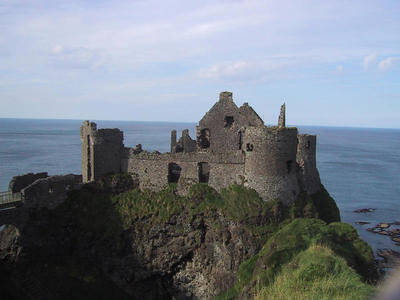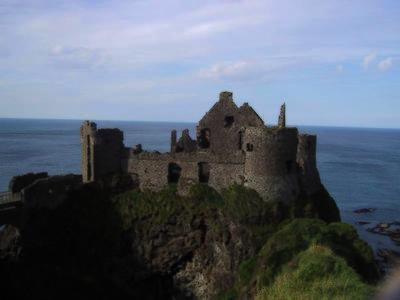Archive for October, 2003
Panther Summary
I’m now aquired and installed Panther (the family version) on an external firewire drive.
Verdict 1: It doesn’t play nice with my Geforce 4MX card in the Sawtooth machine. After the first disk wants to reboot, I’m left with a black screen. Attaching to the tibook works, so finishing the installation works.
Verdict 2: It does work on the tibook, and seems snappier than Jaguar. I’m not sure if this is due to Panther or the fact that it’s installed on a 7200rpm external drive, rather than the internal 4200rpm one.
Verdict 2.5: Powerbooks are no fun with a 5 lb firewire drive attached to them.
Verdict 3: If you change your admin user name using NetInfo Manager, make sure that you alter the sudoers file and the admin group to include the new username. You will need sudo and niutil to fix things. Or alternately, make sure that you have an alternate boot disk that you can resurrect things from. Scratch that. If you do anything using NetInfo Manager/niutil, make sure that you have an alternate boot disk.
As for verdict 1, there is at least one solutions that I know of for getting up and running, and I strongly suspect a second.
- Replace your geforce driver with the one from 10.2, which can be downloaded from Other World Computing, or found on your 10.2 drive. It’s named /System/Library/Geforce.kext . See here
- I strongly suspect that simply removing that kernel extension will also work, since I had mine installed with the wrong permissions the first time Panther refused to load it.
Both of those solutions leave you without quartz extreme, so it’s a bit of a hit, especially since we’re talking about a 400mhz machine here. But it does work, which means that I can get on with the business of mucking about in the new os.
And as an aside, this video card doesn’t work in 10.1.x either, which is also a pita since I’m still (sort of) supporting some apps on 10.1. Swapping video cards to change osxen is not a good long term policy. (but those solutions look terribly promising to the 10.1.x problem too. Promising, but not effective.)
***Update!
It works in 10.3.2! Quartz extreme, and oh it’s nice.
No commentsAurora Record
Tuesday Night: Sleep, Aurora.
Wednesday Night: Stayed up, Minor Aurora.
Tonight?
The indicators are pegged from the X10 (no not the painful ad company) flare late yesterday and the weather’s supposed to clear in a couple of hours.
It will probably only happen if I go to bed. So to fake out the aurora, I think I’m going to go to bed early and time one of my lingering cold coughing fits for the middle of the night. Heh.
No commentsBig Solar Flare today
There was an extremely large solar flare this morning, apparently the third largest in the last 20 years or so, pointed directly at the earth. There are forcasts for severe geomagnetic storms, which from my reading would tend to indicate that auroras might be visible in the Seattle area and points southward starting around midnight PST. It’s a little unclear if it’s really going to happen, as recent notable but much less sever flares have resulted in no activity. (even for locals in dark skies).
Some links:
From what I can gather, Seattle should see aurora activity if the Kp value gets above 7 or so, and it’s hovering around a 5 with 8 hours to go before the main mass is supposed to hit round midnight. And I’m not sure that observer satellites are staying up through the storm because of potential damage.
So. Is it worth staying up till midnightish and trying to find a dark spot?
This article says 30 hours from flare to aurora, which puts it tomorrow.
***Update
I decided to go to bed, with ~20% cloud cover from my Seattle neighborhood location. Looking at the data this morning, Kp went to 9 right around midnight local time, which means that we probably had visible aurora while I was asleep. Oh well.
I’m back
Back in from the UK, where I’ve seen their equivalent of sucker weather. So far in two autumn trips to the infamously rainy and wet islands, I’ve seen all of two days of rain. Some mist, some clouds, but a lot of sun.
And we return on a day that Seattle has its wettest day ever – 3.77 inches of rain yesterday. And it’s not really letting up today, if the state of the incoming cat fur means anything.
Other than that, it’s about as you’d expect. 2000 spams, a handful of useful emails, and two cats saying “Feed me, dammit”.
No commentsConsciousness Delayed
While my body is in Northern Ireland, My consciousness is still somewhere over Iceland. A few hours out of phase, made worse by not being used to the custom of drinking (caffeinated) tea with every event.
It’s green here. Shades and shades of green, from dull to neon. And that’s just the back garden.
No commentsThe Dooce Effect…
And now for an imagemagick script that does the dooce effect. You’ll need imagemagick and the perl bindings installed for it to work.
Download dooce.pl
Usage:
perl dooce.pl in.jpg out.jpg
And remember, not every image needs to be dooced.
Before:

After:

The Dooce Effect…
And now for one imagemagick script that does the dooce effect. You’ll need imagemagick and the perl bindings installed for it to work.
Download dooce.pl
Usage:
perl dooce.pl in.jpg out.jpgNo comments
Updated Imagemagick Thumbnail script
A few years ago, I posted a script that I used for generating image thumbnails. I’ve changed my usage of it, so I’m posting another go of it. Since then, OSX has shipped, the Imagemagick .pkg distribution comes with the perl bindings, and I’ve figured out that I generally just want three sizes and 90 degree rotations for the images.
So I generate three sizes into a seperate directory from (usually) 1600px max size images: a 175px (thumbnail, -tm), 400px (medium, -md) and 800px (penultimate, -pt). There’s also a straight 90 degree rotation for each size that gets a -r in the filename. There are also a few index.html files for that quick web based overview.
Call the script using
perl thumbnail.pl directory
This script assumes that your source images are in ~/Pictures/directory/, and that the output should be put in ~/Sites/thumbs/directory/. Edit the paths if you want them in different locations.
Download thumbnail.pl.
No commentsUpdated Imagemagick Thumbnail script
A few years ago, I posted a script that I used for generating image thumbnails. I’ve changed my usage of it, so I’m posting another go of it. Since then, OSX has shipped, the Imagemagick .pkg distribution comes with the perl bindings, and I’ve figured out that I generally just want three sizes and 90 degree rotations for the images.
So I generate three sizes into a seperate directory from (usually) 1600px max size images: a 175px (thumbnail, -tm), 400px (medium, -md) and 800px (penultimate, -pt). There’s also a straight 90 degree rotation for each size that gets a -r in the filename. There are also a few index.html files for that quick web based overview.
Call the script using perl thumbnail.pl [directory]
This script assumes that your source images are in ~/Pictures/[directory]/, and that the output should be put in ~/Sites/thumbs/[directory]/. Edit the paths if you want them in different locations.
#! /usr/bin/perl
use Image::Magick;
$targetExtension = "(jpg)|(tif)|(bmp)|(JPG)";
$thumbnailExtension = "jpg";
$thumbnailSize = "175x175";
$mediumSize = "400x400";
$thumbnailName = "-tm";
$pentSize="800x800";
$mediumName = "-md";
$lgName = "-lg";
$pentName = "-pt";
($startDir, @rest) = @ARGV;
my $image;
$destDir = $ENV{HOME}."/Sites/thumbs/".$startDir;
if (!( $startDir =~ /\//)){
$startDir = $ENV{HOME}."/Pictures/".$startDir;
print $startDir, "\n";
}
opendir (START, $startDir) || die "Couldn't Open Start dir: $startDir";
@files = readdir(START);
closedir (START);
if (not -d $destDir) {
mkdir ($destDir, 0775);
}
open (OUTFILE, ">$destDir/index.html") or die "Couldn't open index.html";
open (OUTFILE2, ">$destDir/index2.html") or die "Couldn't open index2.html";
open (OUTFILE3, ">$destDir/index3.html") or die "Couldn't open index3.html";
foreach $file (sort @files) {
($fname,$extension) = split(/\./,$file);
$fname =~ s/$lgName//;
if ($extension =~ /$targetExtension/i) {
print "$fname \n";
$image = new Image::Magick;
$image->Read("$startDir/$file");
$image->Scale(geometry=>$pentSize);
$image->Write("$destDir/$fname$pentName.$thumbnailExtension");
$image->Rotate(degrees=>90);
$image->Write("$destDir/$fname$pentName-r.$thumbnailExtension");
$image->Scale(geometry=>$mediumSize);
$image->Write("$destDir/$fname$mediumName-r.$thumbnailExtension");
$image->Rotate(degrees=>270);
$image->Write("$destDir/$fname$mediumName.$thumbnailExtension");
$image->Scale(geometry=>$thumbnailSize);
$image->Write("$destDir/$fname$thumbnailName.$thumbnailExtension");
$image->Rotate(degrees=>90);
$image->Write("$destDir/$fname$thumbnailName-r.$thumbnailExtension");
print OUTFILE "< \a href=\"$fname$pentName.$thumbnailExtension\">![]() \
n";
print OUTFILE2 "< \a href=\"$fname$pentName-r.$thumbnailExtension\">
\
n";
print OUTFILE2 "< \a href=\"$fname$pentName-r.$thumbnailExtension\">![]() \n";
print OUTFILE3 "< \a href=\"$fname$pentName.$thumbnailExtension\">
\n";
print OUTFILE3 "< \a href=\"$fname$pentName.$thumbnailExtension\">![]() < /a>\n";
}
}
close OUTFILE;
close OUTFILE2;
close OUTFILE3;
< /a>\n";
}
}
close OUTFILE;
close OUTFILE2;
close OUTFILE3;
No comments
Updated Imagemagick Thumbnail script
A few years ago, I posted a script that I used for generating image thumbnails. I’ve changed my usage of it, so I’m posting another go of it. Since then, OSX has shipped, the Imagemagick .pkg distribution comes with the perl bindings, and I’ve figured out that I generally just want three sizes and 90 degree rotations for the images.
So I generate three sizes into a seperate directory from (usually) 1600px max size images: a 175px (thumbnail, -tm), 400px (medium, -md) and 800px (penultimate, -pt). There’s also a straight 90 degree rotation for each size that gets a -r in the filename. There are also a few index.html files for that quick web based overview.
Call the script using perl thumbnail.pl [directory]
This script assumes that your source images are in ~/Pictures/[directory]/, and that the output should be put in ~/Sites/thumbs/[directory]/. Edit the paths if you want them in different locations.
#! /usr/bin/perl
use Image::Magick;
$targetExtension = "(jpg)|(tif)|(bmp)|(JPG)";
$thumbnailExtension = "jpg";
$thumbnailSize = "175x175";
$mediumSize = "400x400";
$thumbnailName = "-tm";
$pentSize="800x800";
$mediumName = "-md";
$lgName = "-lg";
$pentName = "-pt";
($startDir, @rest) = @ARGV;
my $image;
$destDir = $ENV{HOME}."/Sites/thumbs/".$startDir;
if (!( $startDir =~ /\//)){
$startDir = $ENV{HOME}."/Pictures/".$startDir;
print $startDir, "\n";
}
opendir (START, $startDir) || die "Couldn't Open Start dir: $startDir";
@files = readdir(START);
closedir (START);
if (not -d $destDir) {
mkdir ($destDir, 0775);
}
open (OUTFILE, ">$destDir/index.html") or die "Couldn't open index.html";
open (OUTFILE2, ">$destDir/index2.html") or die "Couldn't open index2.html";
open (OUTFILE3, ">$destDir/index3.html") or die "Couldn't open index3.html";
foreach $file (sort @files) {
($fname,$extension) = split(/\./,$file);
$fname =~ s/$lgName//;
if ($extension =~ /$targetExtension/i) {
print "$fname \n";
$image = new Image::Magick;
$image->Read("$startDir/$file");
$image->Scale(geometry=>$pentSize);
$image->Write("$destDir/$fname$pentName.$thumbnailExtension");
$image->Rotate(degrees=>90);
$image->Write("$destDir/$fname$pentName-r.$thumbnailExtension");
$image->Scale(geometry=>$mediumSize);
$image->Write("$destDir/$fname$mediumName-r.$thumbnailExtension");
$image->Rotate(degrees=>270);
$image->Write("$destDir/$fname$mediumName.$thumbnailExtension");
$image->Scale(geometry=>$thumbnailSize);
$image->Write("$destDir/$fname$thumbnailName.$thumbnailExtension");
$image->Rotate(degrees=>90);
$image->Write("$destDir/$fname$thumbnailName-r.$thumbnailExtension");
print OUTFILE "![]() \n";
print OUTFILE2 "
\n";
print OUTFILE2 "![]() \n";
print OUTFILE3 "
\n";
print OUTFILE3 "![]() < /a>\n";
}
}
close OUTFILE;
close OUTFILE2;
close OUTFILE3;
< /a>\n";
}
}
close OUTFILE;
close OUTFILE2;
close OUTFILE3;
No comments
